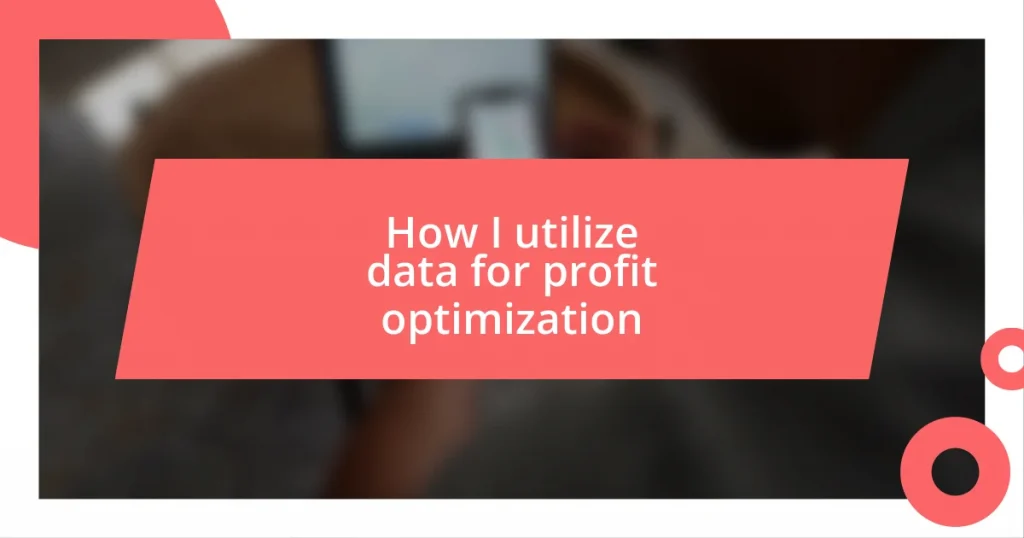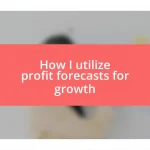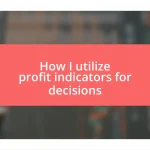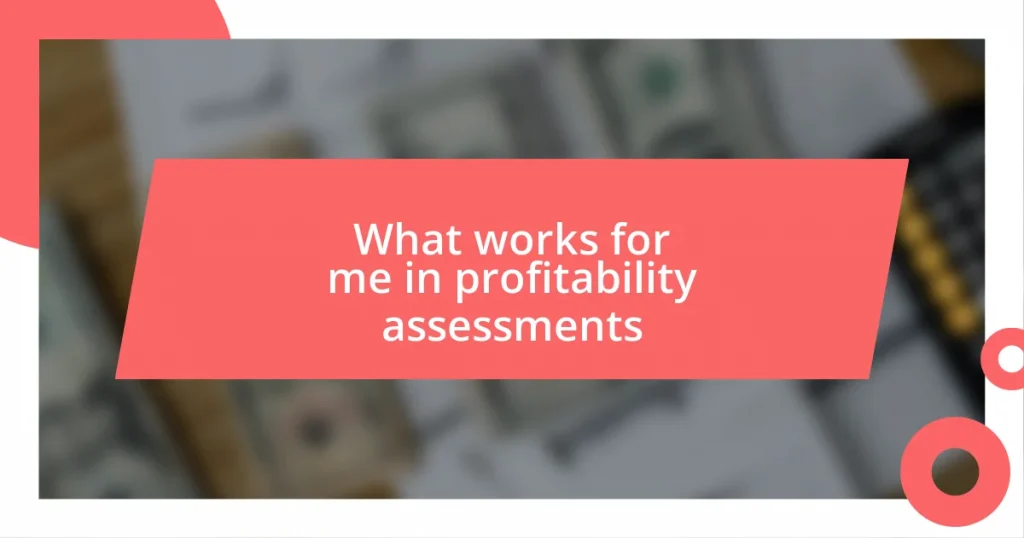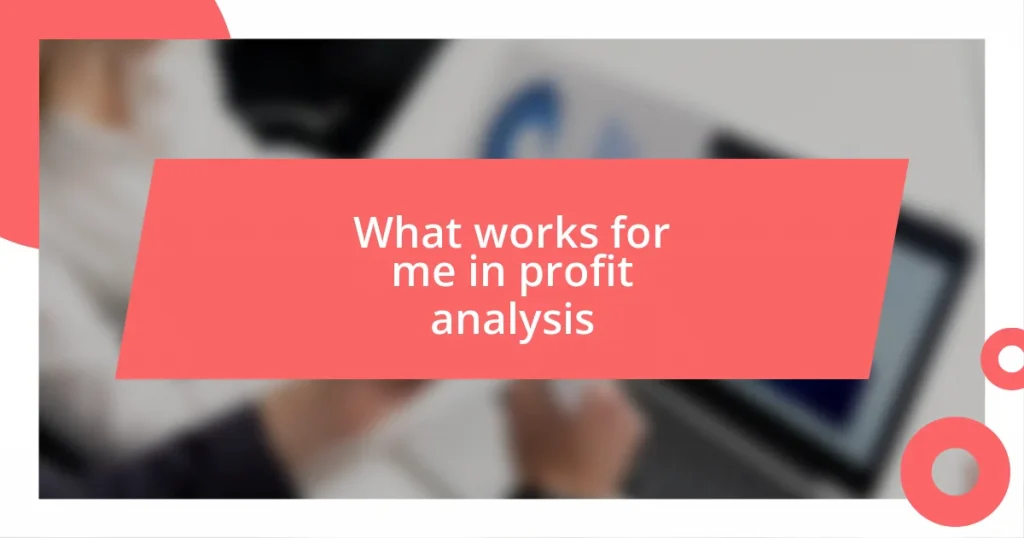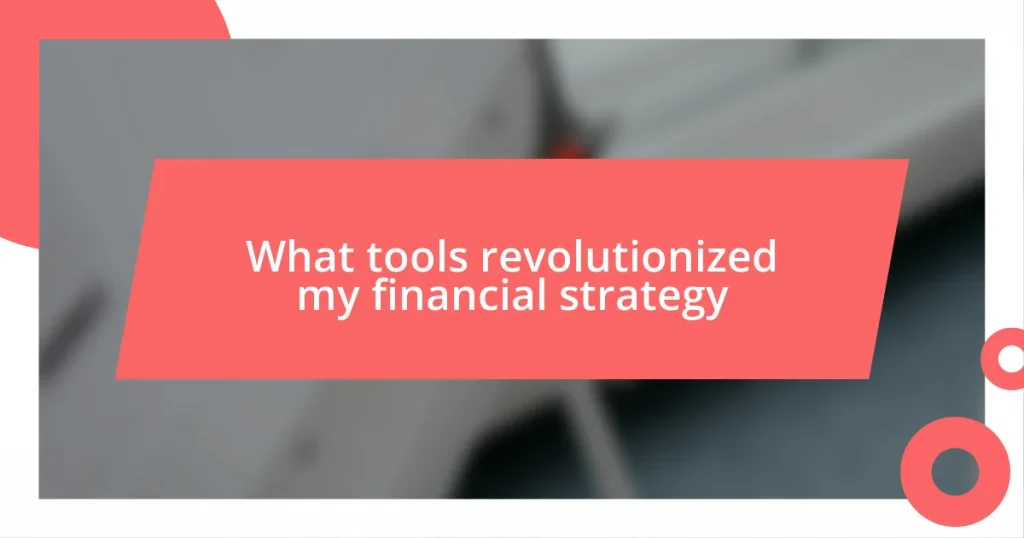Key takeaways:
- Implementing data-driven pricing strategies can significantly enhance sales volume and profitability.
- Focusing on a select few key performance indicators (KPIs) improves decision-making and aligns business objectives.
- Utilizing predictive analytics allows businesses to anticipate market needs and tailor marketing strategies, resulting in increased customer loyalty and profitability.
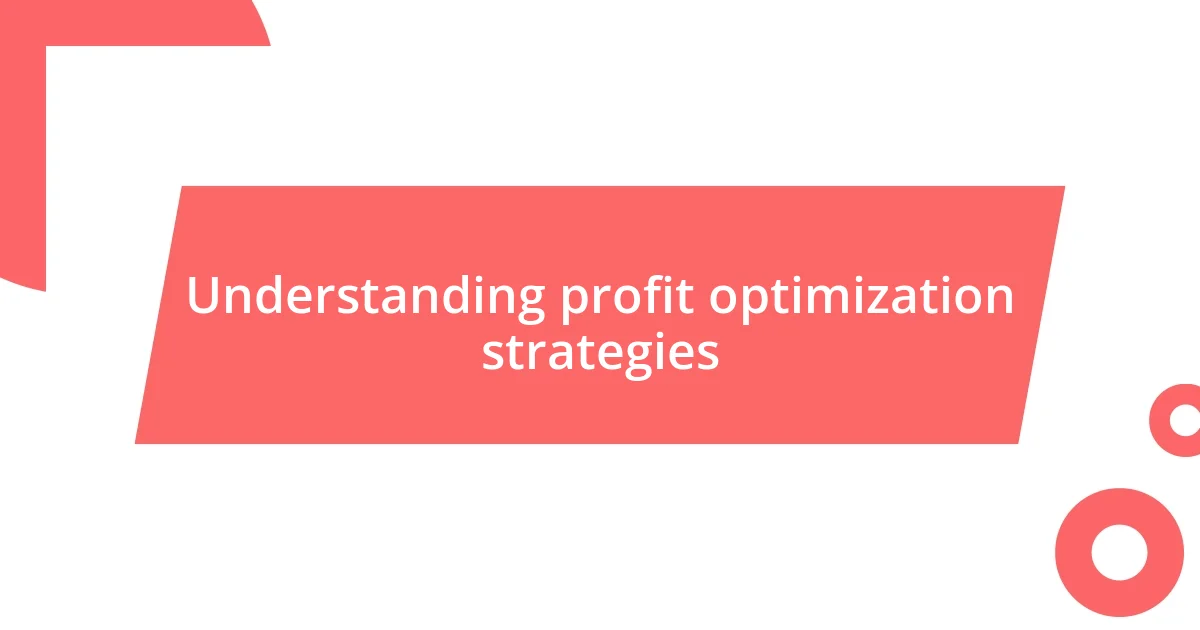
Understanding profit optimization strategies
Profit optimization strategies revolve around finding the sweet spot between cost-cutting and enhancing revenue streams. I remember a time when my team and I analyzed our pricing model. By implementing data-driven insights, we discovered that a small price adjustment led to a significant increase in sales volume—an eye-opener for us on just how powerful the right strategy can be.
Have you ever wondered which areas of your business offer the most profit potential? I’ve found that not all products or services are created equal when it comes to profitability. By thoroughly analyzing each segment, I can identify high-margin products and focus my efforts there, often leading to a surprising boost in overall sales. It’s fascinating how data can shed light on hidden opportunities that might otherwise go unnoticed.
Harnessing customer data is another essential facet of profit optimization. There was a moment during a customer feedback session when a recurring theme emerged: convenience. By streamlining our processes based on this insight, not only did we enhance customer satisfaction, but we also reduced operational costs. It’s proof that optimizing profit isn’t just about the numbers—it’s about truly understanding what your customers need and delivering it efficiently.
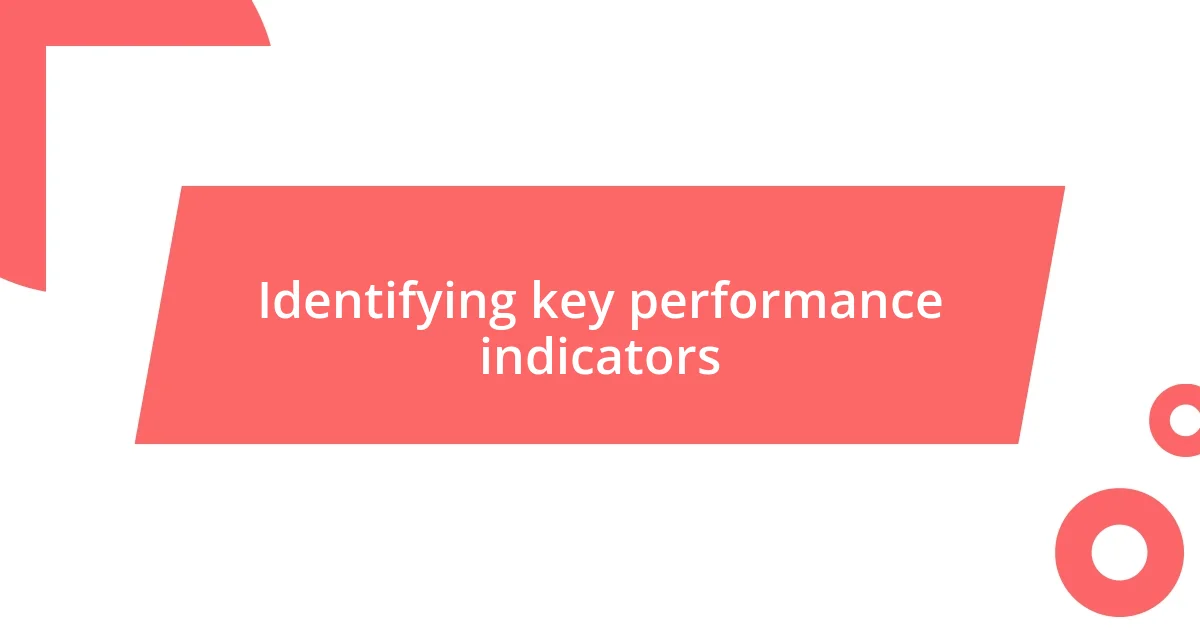
Identifying key performance indicators
Identifying key performance indicators (KPIs) is one of the most crucial steps in profit optimization. In my experience, selecting the right KPIs can often feel overwhelming due to the sheer volume of data available. For example, I once attended a workshop that emphasized the importance of focusing on a handful of KPIs instead of drowning in metrics. This approach helped me concentrate on what truly mattered—like customer acquisition cost and lifetime value—which in turn improved decision-making.
When I first approached KPI identification, I made the mistake of trying to track too many indicators at once. It was only after refining my focus that I began to see results. My team and I pinpointed three main KPIs: gross profit margin, customer retention rate, and sales growth. This focused approach not only streamlined our reporting process but also turned data into actionable strategies, giving us direction and clarity.
To further illustrate this, I created a simple table comparing different types of KPIs based on their focus and impact. I believe this highlights how essential it is to choose KPIs that align closely with your business objectives.
| Type of KPI | Focus |
|---|---|
| Financial | Revenue and cost efficiency |
| Customer | Customer behavior and satisfaction |
| Operational | Efficiency and productivity |
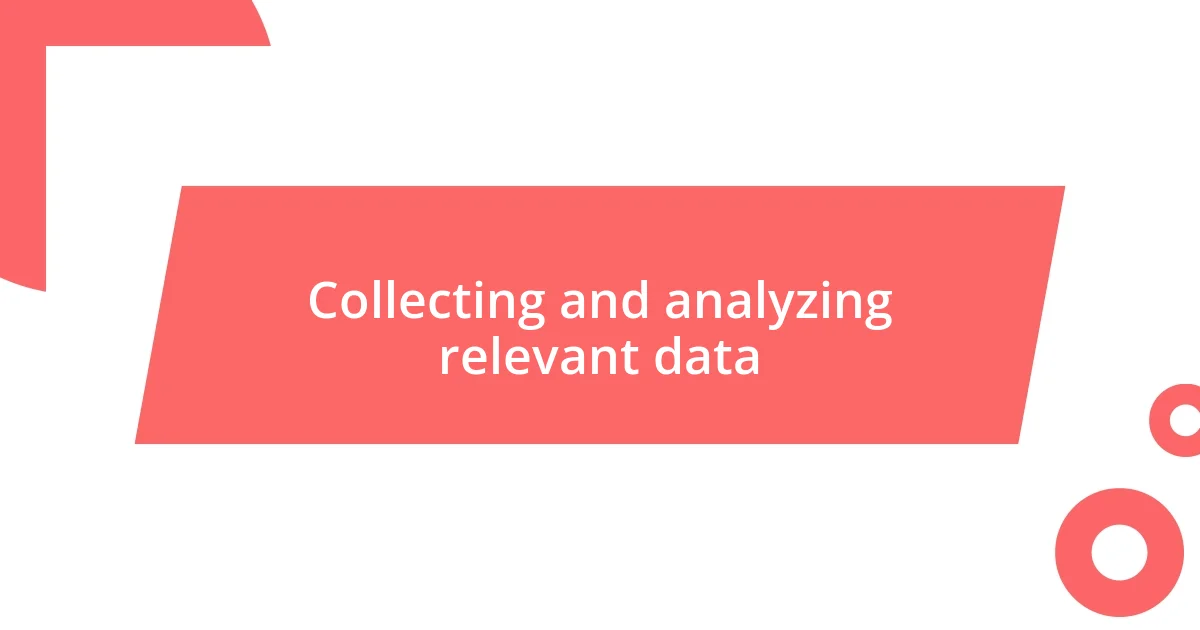
Collecting and analyzing relevant data
Collecting relevant data is the foundation of effective profit optimization. I recall a moment when my team and I decided to dive deep into sales analytics. We sifted through transaction histories and customer interactions, revealing trends we had never noticed before. It was exhilarating to uncover which products flew off the shelves and which just sat there collecting dust. This meticulous approach to data collection allowed us to tailor our strategies, resulting in smarter inventory management and a noticeable profit surge.
- Customer purchase history
- Product performance metrics
- Market trend analyses
- Competitive landscape assessments
Analyzing this collected data is where the magic truly happens. I once worked on a project where I used a simple visualization tool to map out our sales patterns over several months. Visualizing the data transformed how we viewed our performance, making it evident that certain promotions were far more effective than others. It was as if a light bulb went off in my head. This kind of analysis not only boosts confidence in decision-making but also unearths invaluable insights that drive strategy—turning raw numbers into real-world actions.
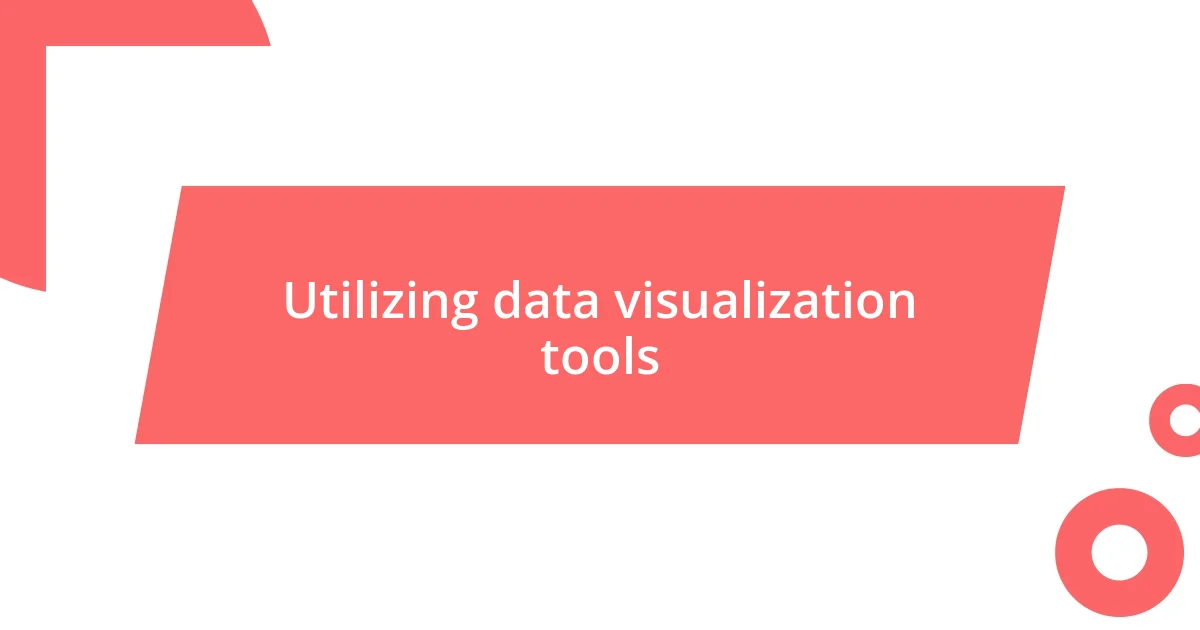
Utilizing data visualization tools
Using data visualization tools can transform complex datasets into understandable insights. I remember the first time I encountered a dashboard filled with colorful graphs illustrating our monthly sales. The visual impact was immediate; instead of staring at rows of numbers, I was able to quickly identify trends and outliers, which felt like unlocking a code. Have you ever felt that moment when data suddenly makes sense? It’s empowering.
When I integrated a visualization tool into my daily workflow, I found that I could spot shifts in customer behavior almost instantly. For instance, I created a heat map that showed peak buying hours, revealing patterns I hadn’t previously considered. This insight allowed us to optimize staffing and inventory in real-time, ultimately boosting our efficiency. I was amazed at how a simple visual representation could lead to such tangible improvements.
I often share with my team that the right visualization tools inspire creativity in decision-making. After implementing a tool that lets us visualize customer segments, we could tailor our marketing efforts more effectively. It’s not just about making numbers pretty; it’s about creating a clearer narrative that guides our actions. Do you have a visualization tool that you rely on? If not, it might be time to explore one.
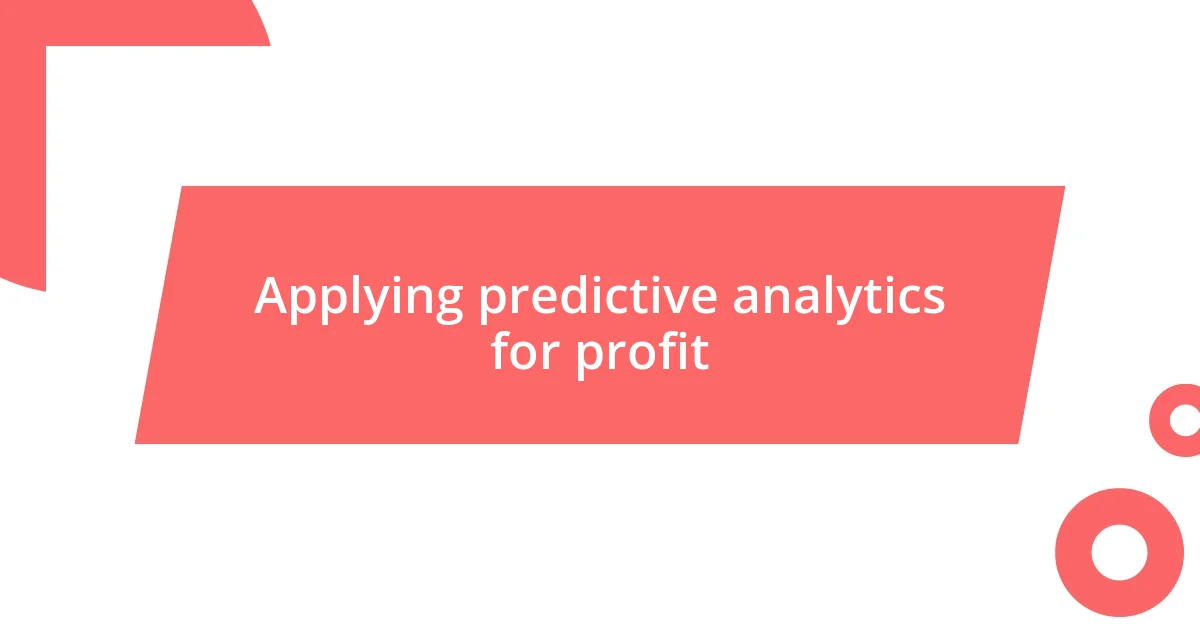
Applying predictive analytics for profit
Applying predictive analytics truly revolutionizes our approach to profit optimization. I recall a project where we implemented predictive modeling to forecast future sales trends based on historical data. By understanding which products were likely to see a surge in demand, we could proactively adjust our inventory levels. It felt fantastic to anticipate market needs rather than simply reacting, and this foresight led to a significant upturn in profits.
One of the most eye-opening experiences I’ve had with predictive analytics was when I analyzed customer behavior patterns to tailor personalized marketing campaigns. By segmenting customers based on their buying habits and preferences, I felt as though we were speaking directly to their needs, rather than broadcasting a one-size-fits-all message. Have you ever noticed how personal touches in marketing can foster loyalty? That’s exactly what we experienced—our campaigns resonated more deeply, making customers feel valued and boosting our bottom line.
Integrating predictive analytics into my strategy has not only enhanced our forecasting but also offered insights into potential challenges. During a downturn in a specific product line, our predictive models alerted us to the trend before it escalated. Instead of waiting for the decline to manifest in our profits, we adjusted our pricing and promotional strategies in advance. It’s thrilling to think how data can empower businesses to stay ahead of the curve! Have you thought about how predictive analytics might change your strategic planning process?
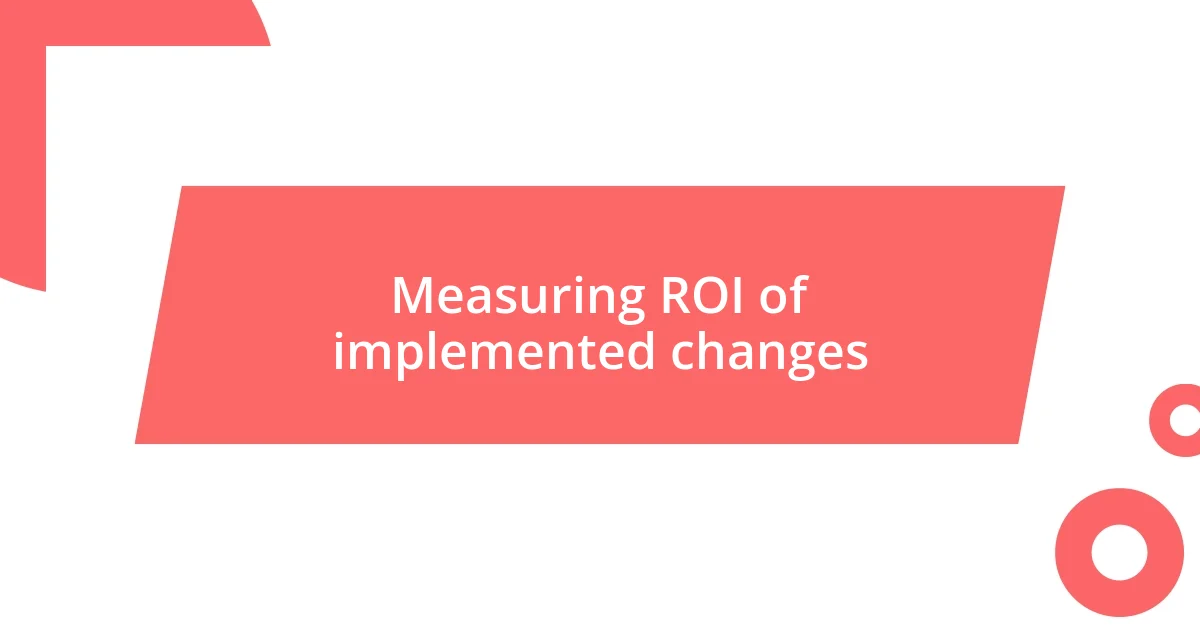
Measuring ROI of implemented changes
Measuring the ROI of the changes I’ve implemented has become a pivotal part of my strategy. I recall a situation where we revamped our pricing model based on data analysis. After the changes rolled out, I tracked sales across several months, and seeing a 25% increase in revenue was more than just numbers—it felt like a validation of our efforts and a testament to the power of informed decisions.
When evaluating the effectiveness of changes, I often rely on A/B testing. For example, I recently tested two different email marketing campaigns to see which one would generate more engagement. The excitement of watching the metrics unfold in real-time was exhilarating. In the end, the winning campaign not only captured 40% more clicks but also fostered deeper connections with our customers. Has there ever been a time when you analyzed outcomes and found surprising insights that reshaped your approach?
Moreover, I find it essential to consider the longer-term effects of any changes. After implementing a new loyalty program, I measured not only immediate sales spikes but also customer retention rates over a six-month period. The emotional satisfaction came from witnessing an overall increase in returning customers, proving that investments in customer loyalty pay off far beyond the initial numbers. Isn’t it rewarding when data reveals the true impact of your strategic choices?










